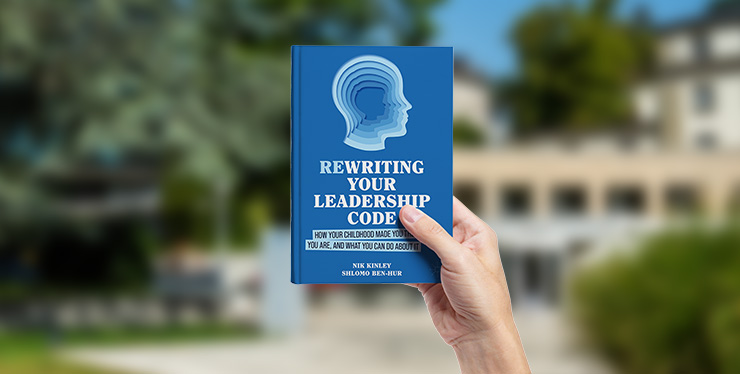
Building on firm foundations is the key to architectural and, increasingly, business success
The Pont du Gard is an inspiring bridge. Part of the 50km-long Roman aqueduct that brought water to the city of Nemausus (Nîmes) in the South of France and built almost 2,000 years ago, it took 15 years to build. It is a magnificent structure and a testament to sound engineering.
My engineering background means I was trained to deal with absolutes. For example, gravity is gravity. Either you account for it or the laws of physics bring you back to reality really fast. There is no cheating physics.
That absolutist background means I’m often amazed at the cavalier attitude displayed in business. Here, if the math doesn’t add up, the attitude seems to be ‘It’s okay, we have alternatives.’
Accounting practices are modified or the bill is passed on to someone else, for example. We end up with popular companies that have never turned a profit, as markets reward growth and the possibility of future profits, over evidence that the company’s value proposition is actually sound.
Growth that satisfies markets means moving fast, and in today’s world, this results in cutting corners. That is tolerated. In fact, it’s expected. “Move fast and break things,” is Facebook’s motto. It seems to be the rallying cry for the whole of Silicon Valley.
We haven’t learned from our mistakes
Of course, tremendous growth can result in casualties. Enron’s collapse took a toll. Similarly, when the 2008 toxic-asset bubble exploded, people got hurt.
Unfortunate, but we are assured that’s all in the past. Governments bailed out players too big to fail – you and I picked up the tab, thank you very much – and everybody got a second chance with lessons learned.
Look at The We Company. A few weeks ago, it was valued at 47 billion dollars ahead of its announced IPO. Within days, its value was ‘corrected’ to $15bn and has since dropped to $8Bn—83% below its original value. It has since cancelled its IPO, and some now consider it as distressed assets.
A correction of this scale before it hit public markets would suggest things are changing. For once, the private equity backers who helped build the house of cards did not convince public markets to buy their shares before the structural weaknesses revealed themselves. So we’re all right now, aren’t we?
No, we’re not, because nothing major has changed. The We Company’s failure to launch is likely due to specific circumstances rather than new regulations or other systemic safeguards.
Take a look at Uber’s stock, down below $33 from its IPO price of $45 in May 2019. Recall that $45 was considered low for the IPO. Peloton IPO’d a couple of weeks ago at $29 per share but is now in the $21 neighborhood. SmileDirectClub, Slack, and Lyft all IPO’d this year and are all down at least 30 percent over their original prices.
While these failed IPO stories may suggest the private-equity model of startup support has reached its limits, take a further step back and it becomes clear the problem has spread. The ‘moving-quickly-at-all-costs’ mantra has metastasized beyond Silicon Valley, to industry – Boeing – and even politics.
We can’t be trusted
The news on how Boeing designed the latest 737 exposes evidence that it favored profits over safety. However, maybe Boeing’s problem isn’t Boeing’s alone. Maybe it’s a problem of our time; one of markets expecting ever-more growth, ever-more profits, ever-less ‘fat’ in organizations. At some point, doesn’t cutting fat from an already lean organization mean cutting into the important muscle that supports it?
If we’re honest we should admit that we’re a greedy species. Who among us can take a look in the mirror and say ‘I have enough’? Satiety does not seem part of our genetic coding. We should self-regulate, but can’t. Perhaps we should rely on an adult to do the regulation for us. Like, well, an actual regulator.
Let’s go back to the fundamentals
Silicon Valley’s funding model fostered many successes and, in some cases, moving fast and breaking things is desirable – if the cost of failure is acceptable. However, there are settings you cannot afford to fail in. NASA did not send people to the moon by launching rocket after rocket expecting them to explode. Instead, they built on victories, always aiming towards safety.
We would do well to build more often upon victories. That may mean more regulation, less growth, and less profits. But in return we may gain longer, sustainable results. Maybe we ought to swap out some of that ‘maximizing shareholder value’ thing for a reasonable rate of return.
It is no accident that Roman aqueducts have lasted 2,000 years. It took time and money but the results are unparalleled. Let’s aim to be remembered not because we occasionally achieved double-digit growth but because we built something substantial, impressive and able to stand the test of time.
Research Information & Knowledge Hub for additional information on IMD publications
When it comes to trade openness, the US Presidential election confirmed that America is turning inward. Trading partners should assess their exposure to the abrupt loss of goods market access to the United States. This briefing shows that, fortuna...


Venezuela is engulfed in a political and economic crisis, which has forced over 6 million people – some 20% of the population – to flee the country since 2015. The mass exodus began when Venezuela’s economy collapsed, giving rise to rampant inflat...

China has announced that in 2023 its population declined from 1.4118 to 1.4097 billion people. Forecasting by the UN suggests China’s population will dip to 1.313 billion by 2050 and then down to about 800 million by 2100. This is a significant ch...
Research Information & Knowledge Hub for additional information on IMD publications
Research Information & Knowledge Hub for additional information on IMD publications
Research Information & Knowledge Hub for additional information on IMD publications
in I by IMD 19 July 2024
Research Information & Knowledge Hub for additional information on IMD publications
in Hitotsubashi Business Review Summer 2024, vol. 72, no. 1
Research Information & Knowledge Hub for additional information on IMD publications
in The Conversation 11 March 2024
Research Information & Knowledge Hub for additional information on IMD publications
Research Information & Knowledge Hub for additional information on IMD publications
Research Information & Knowledge Hub for additional information on IMD publications
in The Conversation 12 February 2024
Research Information & Knowledge Hub for additional information on IMD publications
Research Information & Knowledge Hub for additional information on IMD publications




